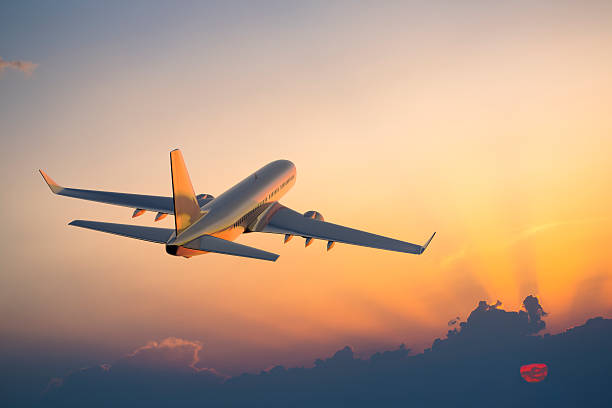Air Travel in USA – Air travel in the United States is an extensive and welldeveloped system that plays a crucial role in the country’s transportation infrastructure. Here’s a detailed overview:
1. Airports
Number of Airports: The U.S. has over 5,000 publicuse airports, including 500 commercial airports. Key hubs include major international airports like HartsfieldJackson Atlanta International Airport (ATL), Los Angeles International Airport (LAX), Chicago O’Hare (ORD), and John F. Kennedy International Airport (JFK).
Types of Airports:
Major Hubs: These include large international airports serving as gateways for domestic and international flights.
Regional Airports: Smaller airports servicing regional or shorthaul flights.
General Aviation Airports: Mostly cater to private planes, charters, and business jets.
2. Airlines
Major Airlines: The U.S. aviation market is dominated by large airlines, including:
American Airlines: One of the world’s largest airlines.
Delta Air Lines: Another global giant.
United Airlines: Known for its extensive global network.
Southwest Airlines: Specializes in lowcost, nofrills service.
LowCost Carriers: Airlines like Spirit Airlines, Frontier Airlines, and Allegiant Air provide lowcost services, often charging for extras like baggage, seat selection, and snacks.
Regional Airlines: Smaller carriers like SkyWest, Envoy Air, and Horizon Air that often operate flights on behalf of larger airlines under a regional banner (e.g., United Express, Delta Connection).
3. Routes and Connectivity
Domestic Flights: The U.S. has an extensive domestic flight network, connecting all major cities and numerous regional areas. Travel between major cities like New York, Los Angeles, Chicago, Dallas, and Miami is frequent, with multiple daily flights.
International Flights: The U.S. is connected to the rest of the world by flights to Europe, Asia, Latin America, and other regions, with major airlines operating direct and connecting services.
HubandSpoke Model: Many U.S. airlines operate on a hubandspoke model, where flights from smaller cities are routed through larger hub airports before connecting to other major destinations.
4. Regulations and Safety
Federal Aviation Administration (FAA): The FAA oversees and regulates all aspects of civil aviation in the U.S., ensuring safety standards, air traffic control, and airport operations.
Transportation Security Administration (TSA): Responsible for the security screening of passengers, luggage, and cargo at airports, the TSA operates under the Department of Homeland Security.
Environmental and Noise Regulations: The FAA also enforces regulations concerning aircraft noise, air quality around airports, and environmental standards.
5. Passenger Experience
Ticketing: Most airlines offer tiered pricing (economy, premium economy, business, first class) with numerous fare classes based on flexibility, baggage allowances, and amenities.
Security Screening: Passengers must pass through TSA security checkpoints, where baggage and persons are screened for safety. This includes body scanners, metal detectors, and sometimes enhanced patdowns.
Airport Facilities: Larger airports often have extensive dining, shopping, and service options, including lounges, dutyfree shops, and other amenities like spas and children’s play areas.
Delays and Cancellations: Delays and cancellations are a persistent issue in U.S. air travel, often caused by weather, mechanical problems, and air traffic congestion, particularly at busy airports.
6. Technology
Booking and Checkin: Most airlines offer online booking, mobile apps, and selfservice kiosks at airports for checkin. Mobile boarding passes have become common.
Baggage Tracking: Airlines have introduced RFID tags and mobile tracking systems that allow passengers to track their checked baggage through an app.
InFlight WiFi and Entertainment: WiFi services are offered on most domestic flights for a fee or sometimes complimentary on specific routes. Many airlines also provide inflight entertainment systems, either seatback screens or streaming to personal devices.
7. Air Traffic Control
The U.S. has one of the most advanced air traffic control systems in the world. Managed by the FAA, air traffic controllers are responsible for the safe coordination of flights during takeoff, landing, and while in flight. Key centers include the National Air Traffic Control System in Warrenton, Virginia.
8. Trends and Innovations
Sustainability: Airlines are increasingly focused on reducing their environmental impact, investing in more fuelefficient aircraft, sustainable aviation fuels (SAF), and carbon offset programs.
Urban Air Mobility (UAM): Emerging trends include electric vertical takeoff and landing (eVTOL) aircraft and air taxis, which could revolutionize shortdistance travel within and between cities.
COVID19 Impact: The pandemic significantly affected air travel, with a sharp decline in passenger numbers in 2020 and 2021. Airlines implemented health and safety measures like mask mandates, enhanced cleaning, and contactless services. Recovery has been ongoing, but challenges remain, including staffing shortages.
9. Challenges
Congestion: Air traffic congestion, particularly around busy airports and airspaces, can lead to delays and extended travel times. Peak travel seasons like summer and holidays exacerbate this issue.
Infrastructure: Many U.S. airports face aging infrastructure, though improvements and expansions are ongoing in key locations like LAX, JFK, and LaGuardia.
Labor Issues: Strikes and labor disputes among pilots, flight attendants, and ground crew occasionally impact service.
10. Economic Impact
The aviation industry contributes significantly to the U.S. economy, supporting millions of jobs, from pilots and flight attendants to mechanics, air traffic controllers, and airport staff. Airports also play a critical role in local economies, generating revenue and supporting nearby businesses like hotels, restaurants, and car rental services.
Overall, air travel in the U.S. remains a critical transportation mode due to the country’s large size, and while it offers extensive connectivity, it faces ongoing challenges related to capacity, environmental concerns, and economic pressures.
Air Travel in USA
